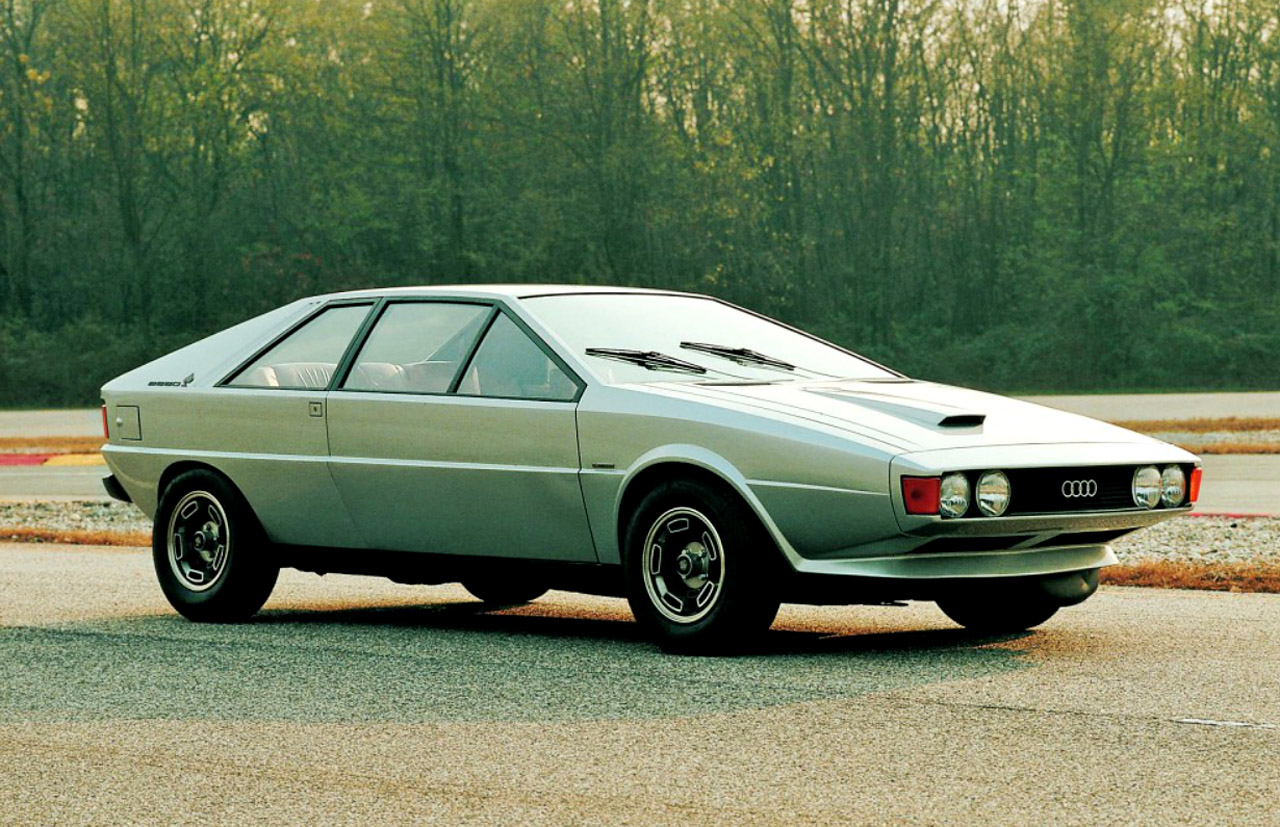5 Misleading Car Ads that Teach You What NOT to Fall for
We all love car ads. Even though their images are exaggerated, confusing and occasionally offensive, we all have to admit that we’ve bought or at least considered buying a car due to advertising. The problem, however, with many car ads, like much of the world’s adverts, is how misleading they are. Although it is true that it takes a gullible person to believe everything an ad says, some of them are mightily convincing. In fact, some of the ads we’re about to show you often present information in such a way that anyone could fall for their trickery. So don’t underestimate their power. Even the seemingly normal ads, ones without talking animals, scantily-clad models or celebrity endorsements, can mislead buyers.
NOTE: Most of these ads are American, but they still hold valuable lessons for Canadian car owners.
Rip-Off in Plain Sight
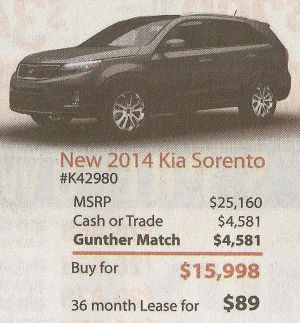

This 2014 Kia Sorento ad looks like a clipping from a newspaper, perhaps what you’d see in a classified section. It presents buyers with an irresistible payment of just $89 a month. But a closer look at the ad’s phrasing reveals how deceptive this deal is, and how it is nothing more than a worm fixed to a fish hook for unaware drivers.
Illusion in print
- The ad counts the downpayment and trade-in to lower the price
- The use of language confuses; “cash or trade” in this context means they’ll only match one, not both
- The phrase “Dealer rebates incentives to the dealer with finance through KMF”, indicates the dealer will take rebates that should go to the buyer
- The fine print reveals the ad would expire the next day (taken on April 20th, expires April 21st), and the fact you’d need a credit approval would make it almost impossible to buy it in time
Fees that Slip by With Ease
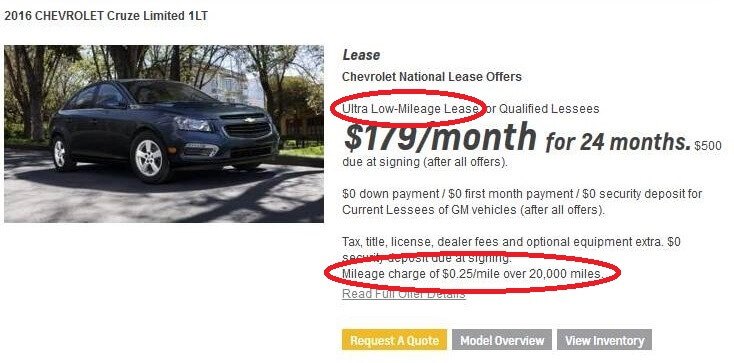
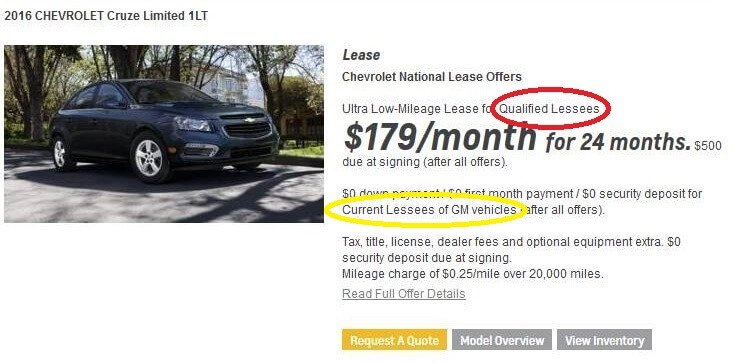
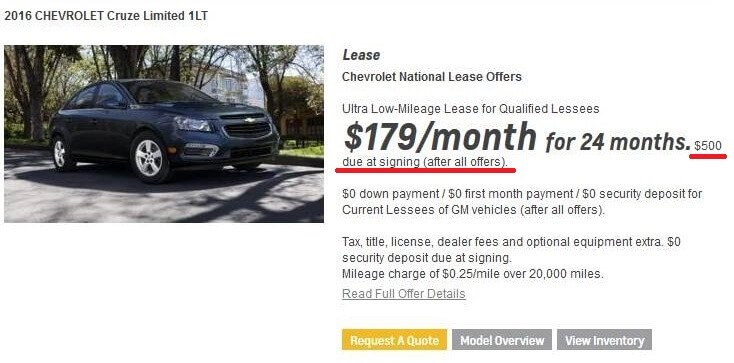
You’re not looking at three car ads here, but rather, just one. This 2016 Chevrolet Cruze ad would look like any ad without the red underlining. With that said, there are plenty of hidden clauses that most people wouldn’t notice, and they add extra costs right under your nose.
On bad terms
- The ultra low-mileage lease clause in the first image shows the deal only gives drivers 20,000 miles over the two-year term (10,000 annually); the average driver in the U.S. logs 13, 476 miles, meaning a violation of this term the extra 3,476 miles and $0.25/mile charge will add a $72.46/month penalty
- The qualified lessees (in the second image) takes advantage of credit scores – “qualified” in this context can be highly subjective, and the seller may lie about your score to charge you more
- Image three reveals a $500 signing fee in such tiny font (in contrast to larger font), that your eye would easily miss it; it says “$0 down payment” right below it
Tesla Shocks Us by Telling a “Fib”
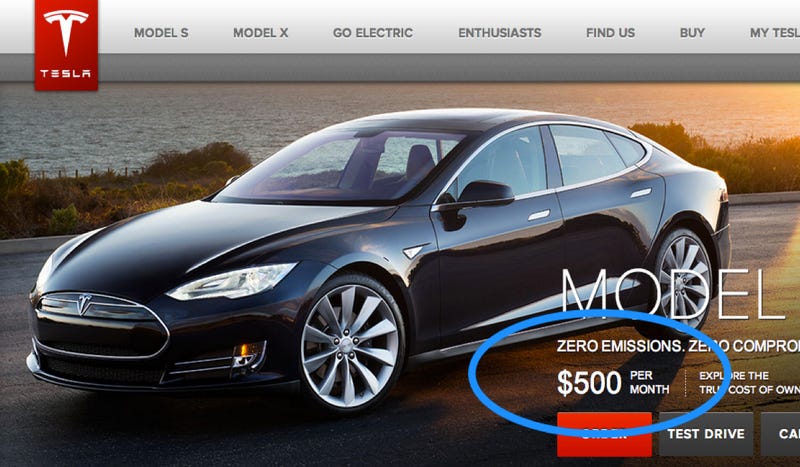
Test driving a Tesla felt quite exclusive at one point; you had to join a waiting list to give one a trial. Yet still, their online ads make their cars rather accessible, claiming to offer financing options at just $500 a month. But those claims have led to much controversy and investigation.
Why these claims are exaggerated
- The $500 monthly cost is based off of numerous assumptions, including a buyer’s salary, distance travelled and electric vehicle tax incentives – none of which may actually reflect the cost
- One of those factors, an available federal tax credit of $7,500 – $15,000 is only available for about a 20% fraction of buyers
- There’s not even an asterisk (or “front” or “starting at”) to denote the plausibility of the cost being subjective
- Buried in the fine print, is how the calculator is intended to give buyers a sense of how much they can save by driving a Model S compared to a regular gasoline sedan (which is a poor comparison to say the least)
Scandalous Claims

The truth behind VW’s advertising
- Researchers have proven VW emissions to have 10 - 40 times more Nitric Oxide (NO₂) than the legal limit
- The basis of their advertising, environmentally-friendly fuel, is the one of the most flawed aspects of their vehicles
- Although ads have some leeway with exaggeration (hyperbole), Volkswagen’s ads have turned to blatant examples of why people distrust advertising in the first place
- To clean up their act (pun unintended), they have released new ads in newspapers that serve as an apology to their customers
Inflated Mileage
 With the steadily rising costs of gas, drivers are more concerned about fuel economy than ever. So naturally, automakers will build and advertise cars that deliver more miles per gallon. Unfortunately, many owners of these cars are disappointed. The 2013 Hyundai Elantra is a good example of this, and many buyers were outraged when they realized they weren’t saving much money at the pump at all.
With the steadily rising costs of gas, drivers are more concerned about fuel economy than ever. So naturally, automakers will build and advertise cars that deliver more miles per gallon. Unfortunately, many owners of these cars are disappointed. The 2013 Hyundai Elantra is a good example of this, and many buyers were outraged when they realized they weren’t saving much money at the pump at all.
Fuel for a fire
- The reality that a driver’s mileage may vary is buried in the fine print
- Mileage numbers aren’t government-mandated
- The numbers are based on optimal driving conditions (ie. good weather, low traffic), but the roads are rarely 100% favourable
- Flocks of Elantra drivers have complained that they don’t see any savings in their fuel costs


